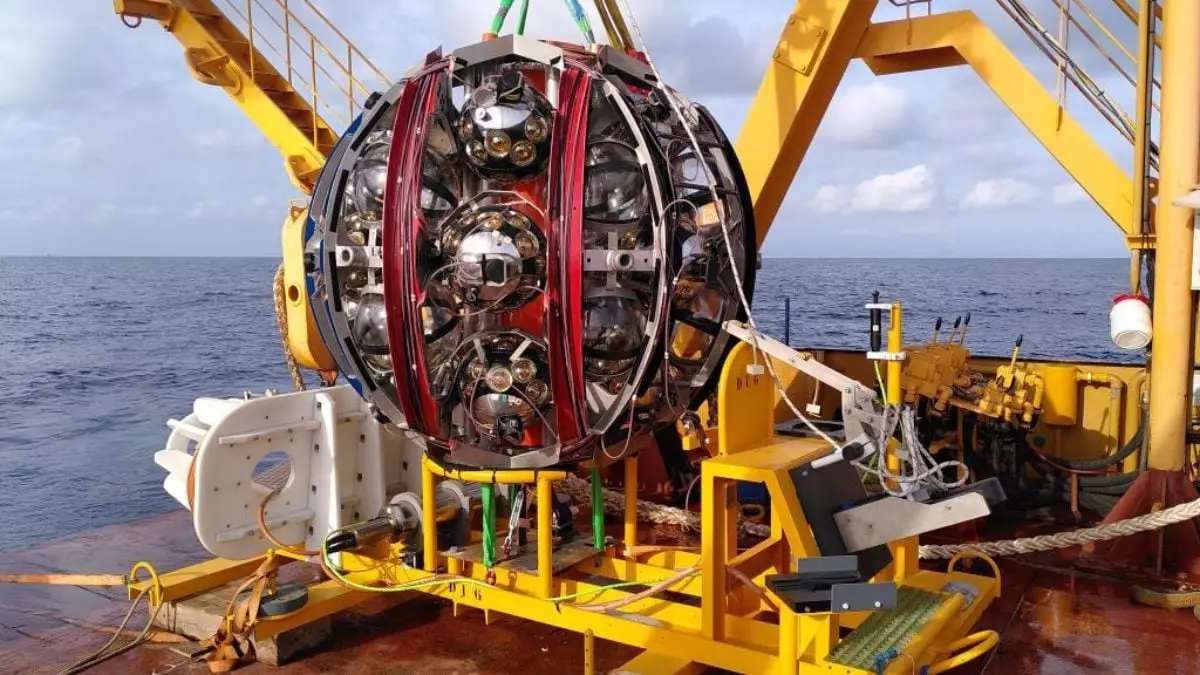In the quest to understand the universe, scientists have turned their sights towards the enigmatic world of neutrinos—subatomic particles that are both abundant and elusive. The KM3NeT (Cubic Kilometre Neutrino Telescope) project, situated in the depths of the Mediterranean Sea, is a striking advancement in neutrino astronomy. This initiative seeks to capture high-energy neutrinos and to glean insights into cosmic events that hold answers to fundamental questions about the universe’s origins and its underlying physics.
Unlike conventional telescopes that utilize electromagnetic radiation—such as light or radio waves—KM3NeT employs a novel method of detection. It relies on the Cherenkov radiation produced when neutrinos interact with water molecules. This innovative design consists of expansive arrays of photomultiplier tubes housed within glass spheres, which act as the main detectors. The systems are suspended from cables stretched across the ocean floor, resembling a pearl necklace unfurling in the water. This intricate setup not only allows for the detection of particle interactions but also positions KM3NeT as a leading tool in the study of elusive high-energy cosmic phenomena.
KM3NeT is comprised of two separate but complementary telescopes. One is anchored near the coast of Sicily, focusing on neutrinos emanating from outer space, while the second, situated off the French coast, aims to analyze atmospheric neutrinos and the fascinating oscillations they undergo. These oscillations, which see neutrinos change between varieties, are crucial for understanding their properties and behaviors. By elucidating these transformations, researchers can explore unknown dimensions of particle physics and possibly unlock secrets concerning dark matter and beyond.
Facing Challenges in Deployment
Despite its promise, the project presents numerous hurdles. The deployment phase is particularly grueling, requiring precise engineering to withstand the harsh conditions of the Mediterranean seabed. Each annual campaign, lasting roughly a month, demands extensive coordination among a team of scientists and engineers, all working against a relentless clock. The challenge lies not only in installing the equipment but also in ensuring its impeccable functionality; once submerged, making corrections becomes exceptionally difficult, if not impossible. Missteps need to be identified and rectified immediately, placing immense pressure on the teams involved.
As construction continues, preliminary results from KM3NeT have already shown promise. The telescope arrays are beginning to deliver valuable scientific information, leading researchers closer to understanding critical phenomena such as quantum gravity and advanced neutrino properties. The impact of this project on the field of particle physics could be profound, potentially reshaping our understanding of both the micro and macro cosmologies. With more data expected in the coming years, KM3NeT stands poised not just as a telescope, but as a beacon of discovery—one that might illuminate the darkest corners of our universe.
KM3NeT represents a significant leap forward in scientific technology, merging engineering ingenuity with the pursuit of knowledge about the universe. As more discoveries emerge from this monumental project, our understanding of neutrinos and their cosmic significance may be forever transformed.



Leave a Reply